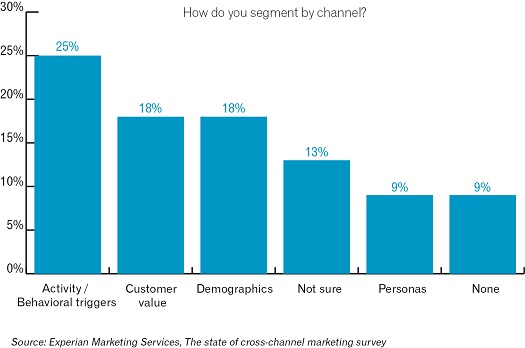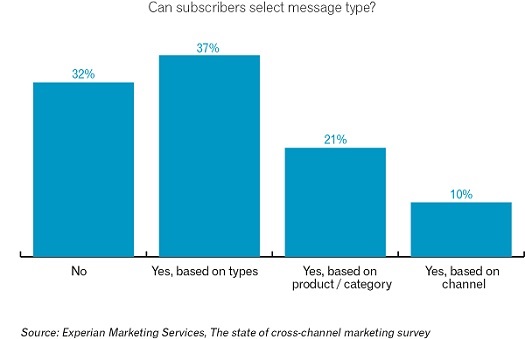For years, brands lacked the means to create highly relevant and meaningful interactions with their customers. Today, that has changed–and the demand has never been greater.
According to Experian Marketing Services’ State of Cross-Channel Marketing Report, marketers from around the world are adopting more customer-centric engagement strategies. With cross-channel marketing technology and predictive analytical tools becoming smarter and more accessible to marketers, they have the ability to help brands manage data, understand the preferences of their customers and most importantly, turn that intelligence into action across every channel at scale.
This evolution of technology has created a clear shift in the industry as more marketers look to technology providers like Experian to help them get and stay close to their customers.
As described in the report, brands today are more customer-centric in their marketing than they were just a year ago. The report, which leverages year-over-year survey results, highlights several trends:
Organizations today are more customer-centric than in 2013
Enterprise brands, like multichannel retailers, are asking their customers to set their own preferences: Brands today are 62 percent more likely to give their subscribers the ability to set their own preferences for branded communications than they were in 2013. Further, they are 89 percent more likely to allow them to select the type of messages that they receive and 48 percent more likely to give options for how often subscribers want to receive those communications.
Retailers are 87 percent more likely today to ask their customers to set their own preferences on communications channels (email, mobile, direct, social, etc.) and 65 percent more likely to allow them to set their category and product preferences. Further, retailers are 131 percent more likely to acquire mobile numbers through preference centers than nonretailers.
Marketers are taking action to improve their data hygiene: Marketers are 53 percent more likely to execute data hygiene techniques than they were in 2013. Retailers are 13 percent less likely to undertake some form of data-hygiene process than nonretailers. However, when they do prioritize data hygiene, retailers are 38 percent more likely to use a data-hygiene provider than nonretail brands.
Brands are leveraging segmentation well beyond simple demographics: More marketers are building segmentation strategies that focus on behavior and lifetime customer value over demographics. Overall, the majority of marketers (25 percent) segment customer based on past activity or behavior.

When it comes to email marketing, marketers are 6 percent more likely to execute some form of email segmentation than in 2013. The most popular forms of email segmentation are activity- and transaction-based triggers. Interestingly, the amount performing language segmentation increased the most year-over-year (+76 percent), followed by value segmentation (+40 percent).
Marketers are testing their campaigns to understand what works for their customers: Ninety-two percent of marketers are testing their marketing programs to understand customer preferences and marketers are more likely to focus on testing campaign performance in email than in other channels. Testing allows marketers to identify underperforming campaigns and adjust in real-time.
For example, marketers testing offers may bring to light that a target consumer responds better to a “dollars off” than a “percentage off” offer. Those results can be used to determine where similar improvements can be made to other channels. Marketers are 42 percent more likely today to view time-of-day testing as an effective test in 2014 than they did in 2013. Meanwhile, nonretailers are 64 percent more likely to claim effectiveness in creative testing than last year.
Significant barriers to customer-centric marketing remain
While marketers clearly are showing improvement in their customer-centric marketing strategies, only 4 percent of brands reported having an integrated customer journey across touch points. Marketers cited siloed marketing organizations (39 percent) and a product-focused structure versus a customer-focused one (28 percent) as the primary barriers.
The research indicates that marketers need to improve in several key areas:
Data Management and Linkage: Seventy-nine percent of companies face challenges when connecting disparate data to create a single customer view.
Attribution: Marketers continue to struggle to measure results and understand how to improve. Last-touch attribution is prevalent among brand marketers, with 70 percent giving credit only to the last channel that the customer interacted with before making a purchase.
A marketer’s ability to collect, integrate, analyze and optimize data intelligently to arrive at meaningful and actionable customer insights is central to cross-channel marketing success and is the key to customer-centric marketing.
In today’s industry, marketers have the means to extract actionable business intelligence from their data and can now access how well they can use that intelligence to drive enhanced results for the customer.
Those marketers who are struggling with customer-centricity need to prioritize attribution. If they have the ability to show how cross-channel relevance drives customer loyalty and ultimately benefits their business’s bottom line, this gives the marketing organization a clear business case to make the customer, rather than a channel, a top priority across the organization.
To learn more about customer-centricity and the state of cross channel marketing, download the report, here.
